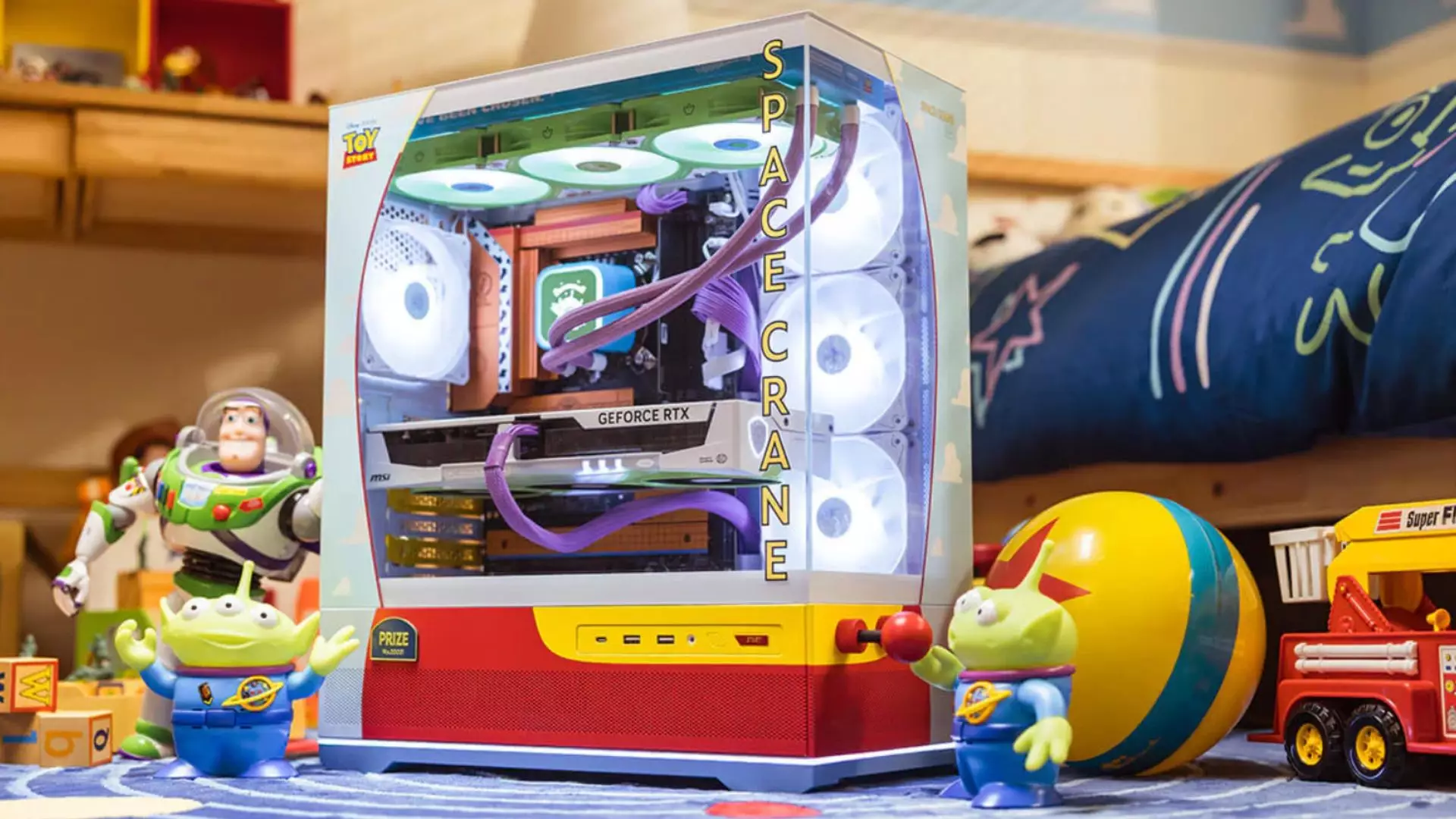There’s no denying that the intersection of childhood nostalgia and cutting-edge technology creates a powerful draw for many consumers, particularly those who grew up enamored with Pixar and Disney movies. MSI’s newly released Toy Story-themed gaming rig seeks to capitalize on that sentimentality by offering gamers not just a powerful machine for their gaming needs, but an experience wrapped in the charm of one of Disney’s most beloved franchises. Retailing for NT$79,900 (approximately $2,653), this vibrant gaming PC is more than just hardware; it’s a celebration of 30 years since the original Toy Story hit the screens. However, while the dreamer in us is thrilled at the whimsical design, the realist in us wonders whether the price tag aligns with the technical performance we expect from a high-end gaming rig.
Specifications Underwhelming Compared to Thematic Appeal
At the heart of this Toy Story concoction lies a GeForce RTX 5070 GPU paired with an MSI Z890 Gaming Plus motherboard, an MSI MAG A850 GL 850W power supply, and an MSI MAG CoreLiquid cooler. The rig is adorned with colorful touches that embody the characters fans adore: a motherboard that nods to Woody, a GPU inspired by Buzz Lightyear, and accents reminiscent of Emperor Zurg. The aesthetic is loud, lively, and undeniably unique—a perfect throwback for any Toy Story aficionado. However, when we peel back the colorful façade and examine the specifications beneath, the excitement may begin to falter. For example, the inclusion of the Intel Core Ultra 5 245K, a chip marketed as more of a budget option, raises eyebrows. Given the price point, one would expect at least a moderately powerful processor tailored for gaming, yet this rig does not deliver that fundamental performance expectation.
Comparing it to other options on the market reveals a stark reality. Competitors offer more robust setups at similar price points—like a significantly more powerful Ryzen 7 9800X3D rig for under $2,100. If we value performance over visual flair, the Toy Story rig seems to fall short. Gamers often seek high-performance components, and while the exterior may pique interest, the internal specifications may not satisfy serious gamers looking for a competitive edge.
Artistry or Chaos? The Design Debate
The design alone invites polarized opinions. MSI’s attempt to channel a playful, chaotic aesthetic results in a machine that’s equal parts adorable and garish. Bright hues of yellow, deep red, and cerulean skies come together to craft the whimsical feel of a toy box, and the crane machine-style case—with its claw machine joystick and celebratory decorations—might indeed charm those with fond memories of their youth. Yet, for others, this colorful concoction may come across as overkill, bordering on kitsch.
The rig also includes fun elements like magnetic decorations styled as toy box prizes that users can attach to the case. While this interactive aspect may enhance personal expression, one must wonder if gamers will embrace the whimsical clutter or prefer a more streamlined design. Ultimately, the commitment to convey a Toy Story vibe gets points for creativity, yet some might wish for a more balanced approach—a design that harmonizes nostalgia with modern aesthetic sensibilities.
Is It Worth the Price Tag?
As we dissect the nuances of the Toy Story gaming rig, we must confront the essential question: is it worth the steep price? While some will undoubtedly rush to purchase this nostalgic machine for its unique design and Pixar crossover appeal, a rational examination suggests that as a gaming rig, it could falter under the scrutiny of performance enthusiasts. Casual fans of Toy Story might appreciate the novelty, but for dedicated gamers, the underwhelming specs seem a convoluted reason to spend such a hefty sum.
In a market filled with options that offer robust hardware at competitive prices, MSI’s Toy Story rig stands out not only for its vibrant design but also for the whirlwind of conflicting impressions it evokes. Is it a commendable homage to the world of animated toys, or an overpriced nod to nostalgia that sacrifices performance for themed appeal? The answer might very well depend on one’s priorities as either a fan of Disney magic or a serious gamer seeking the best equipment for their needs.

